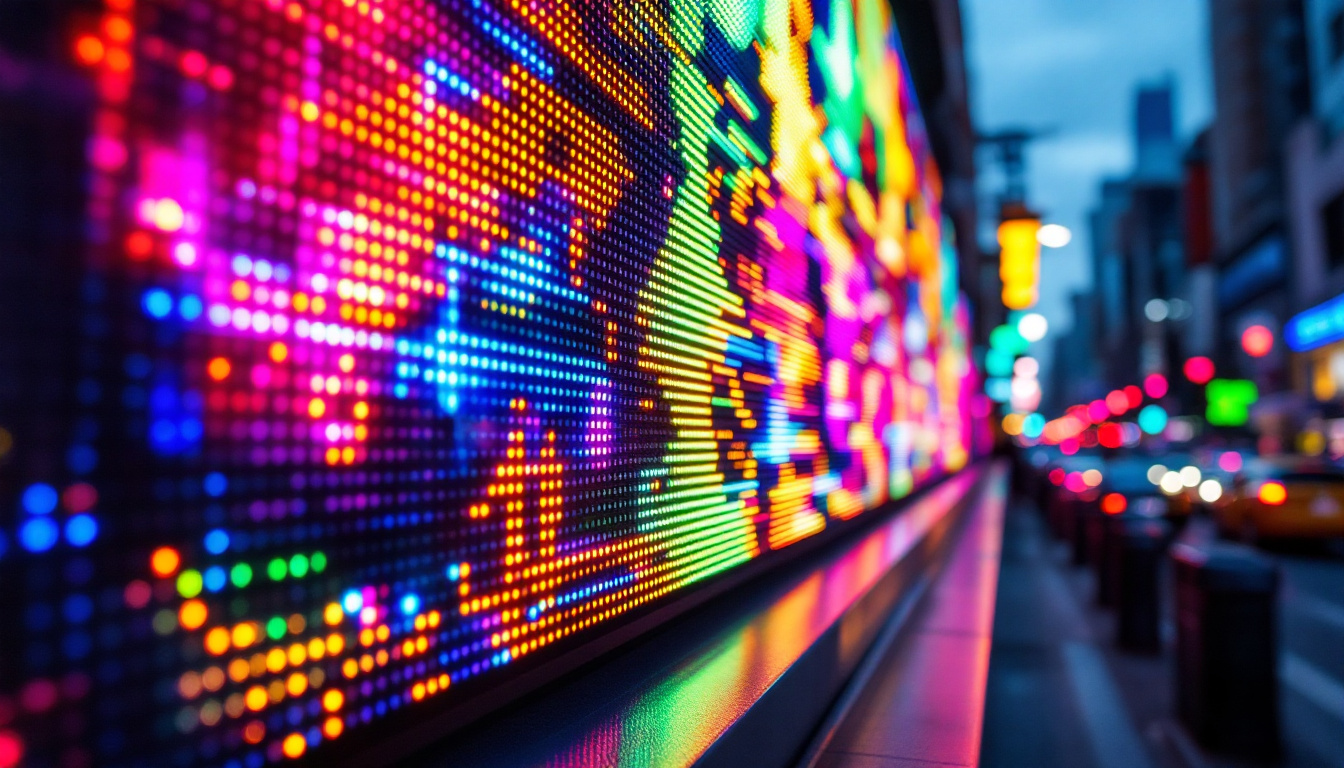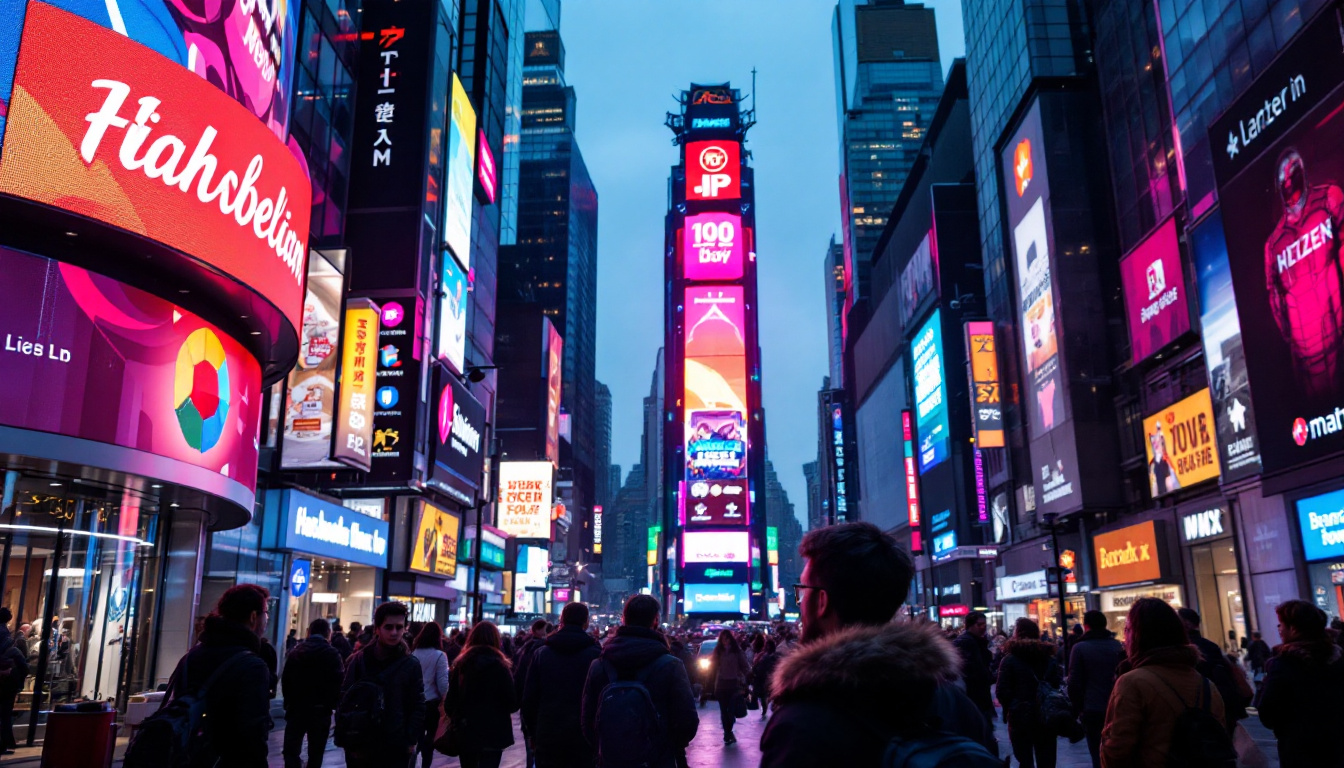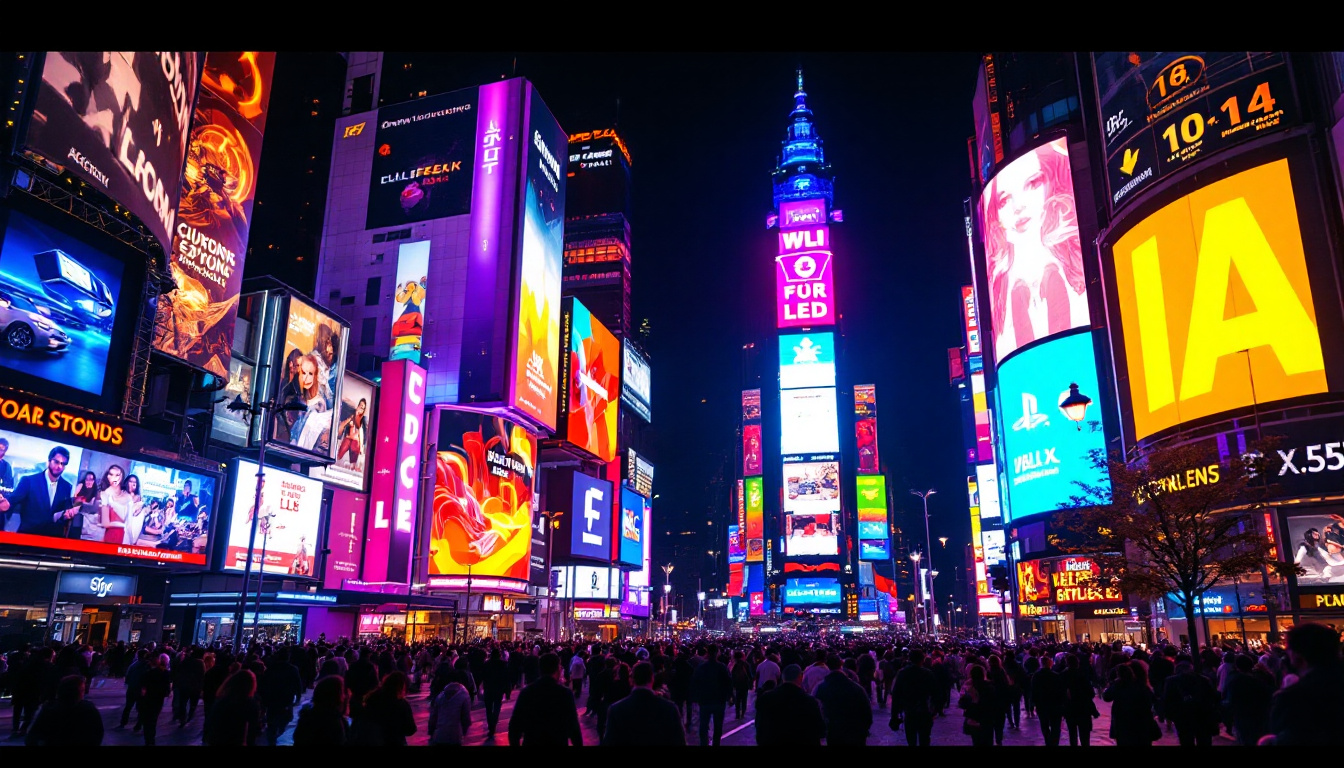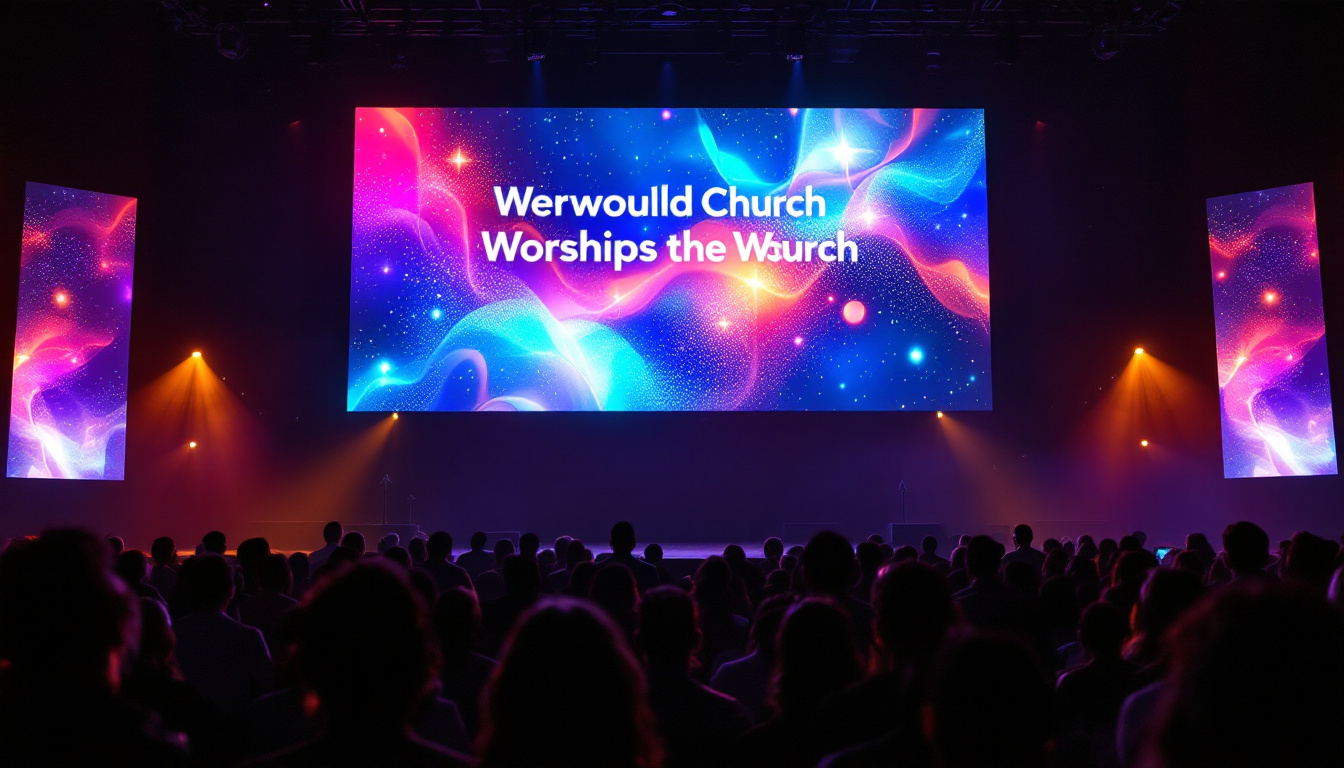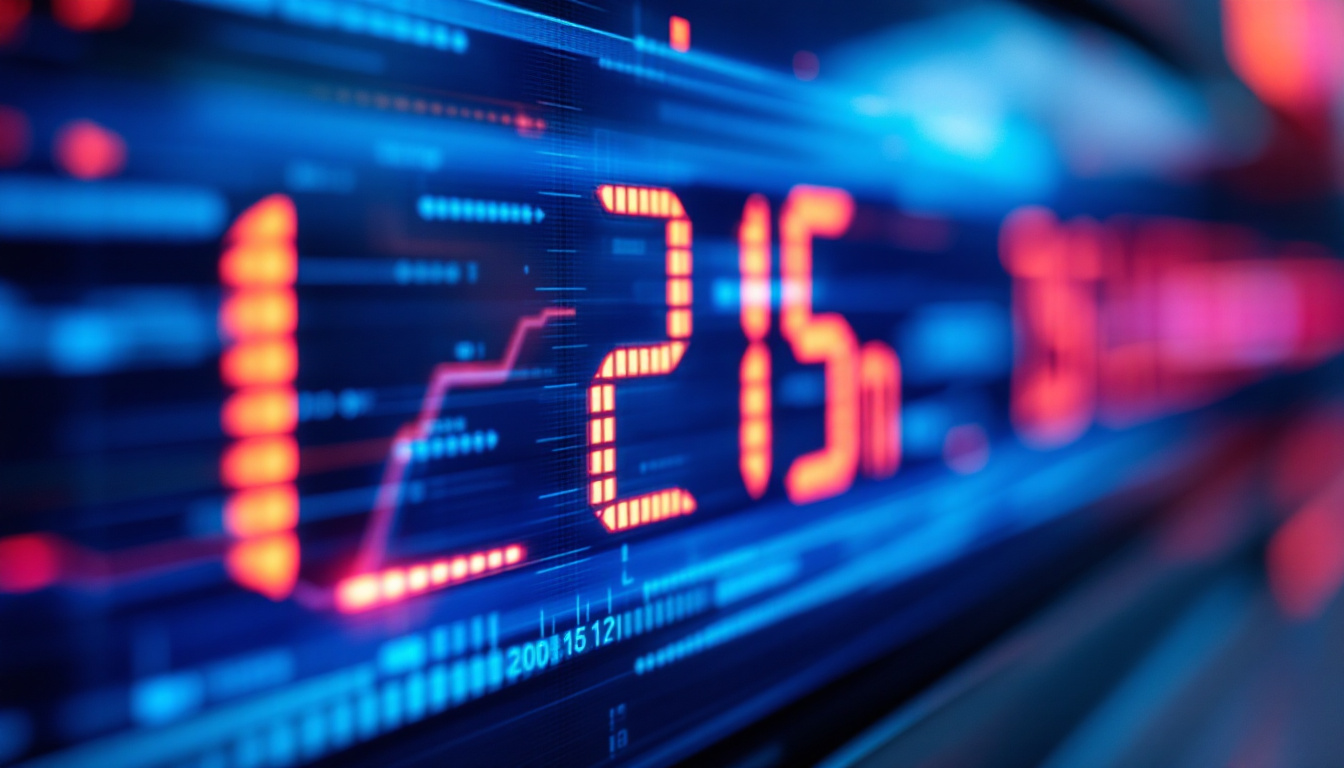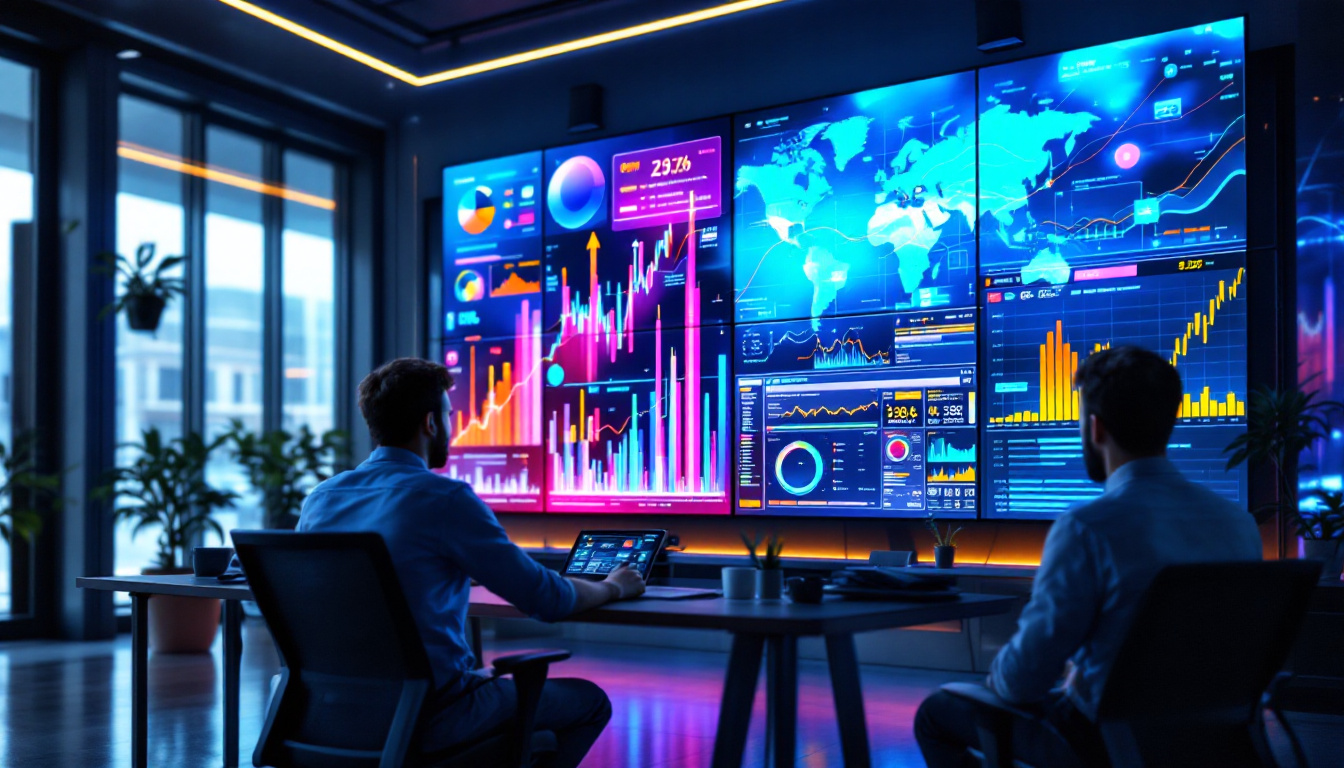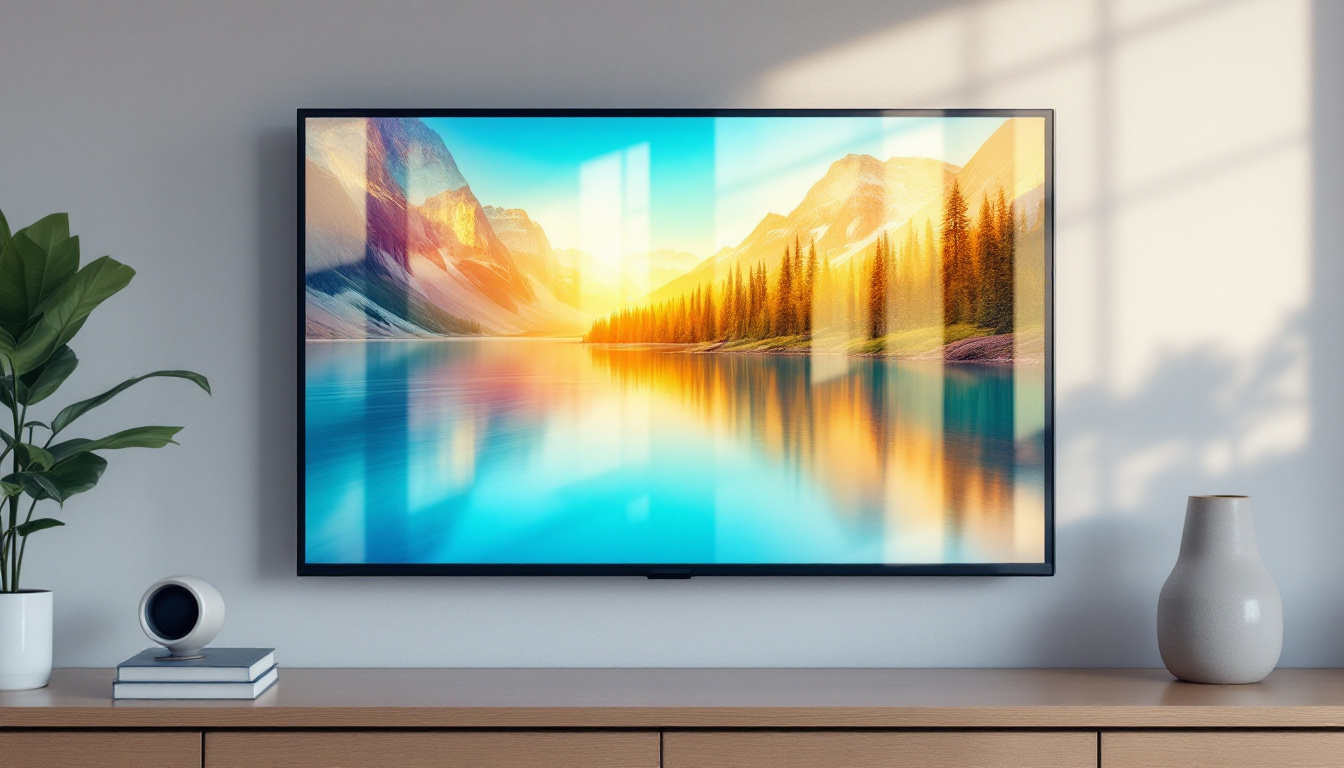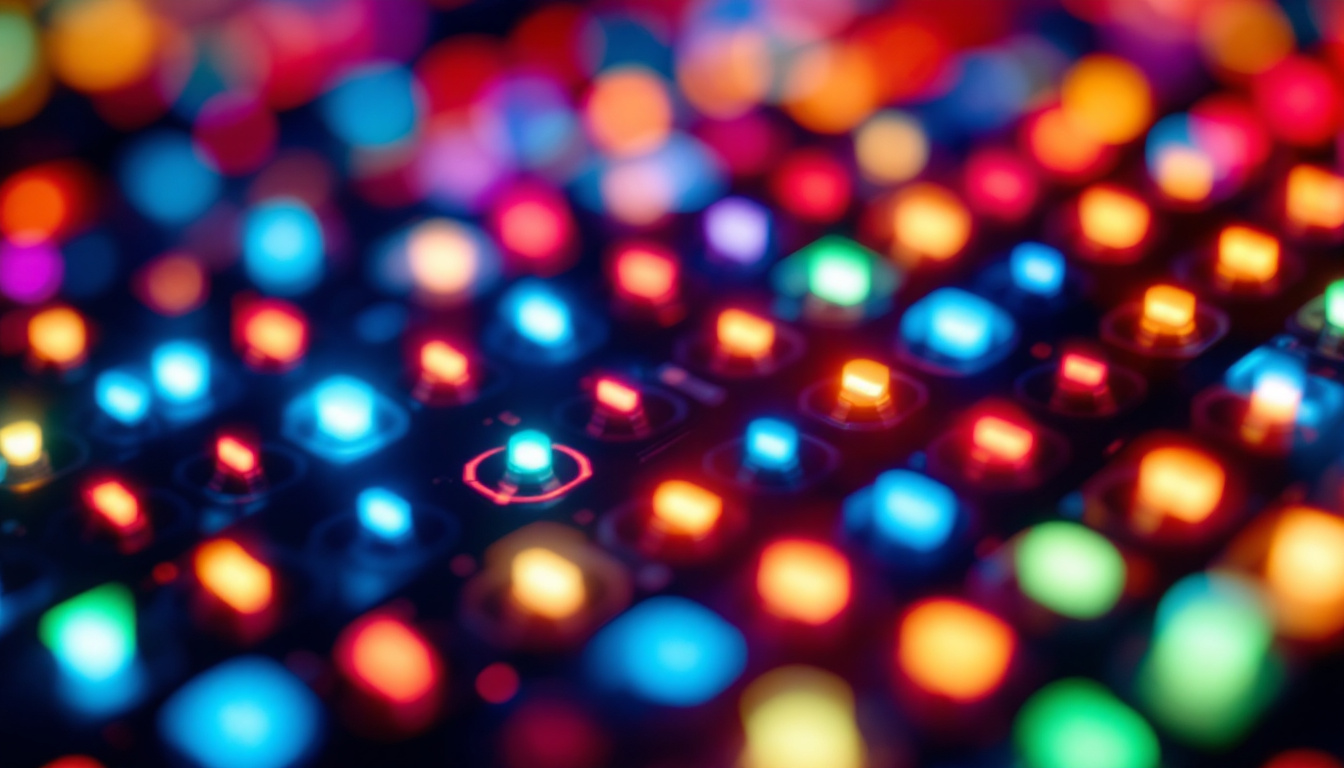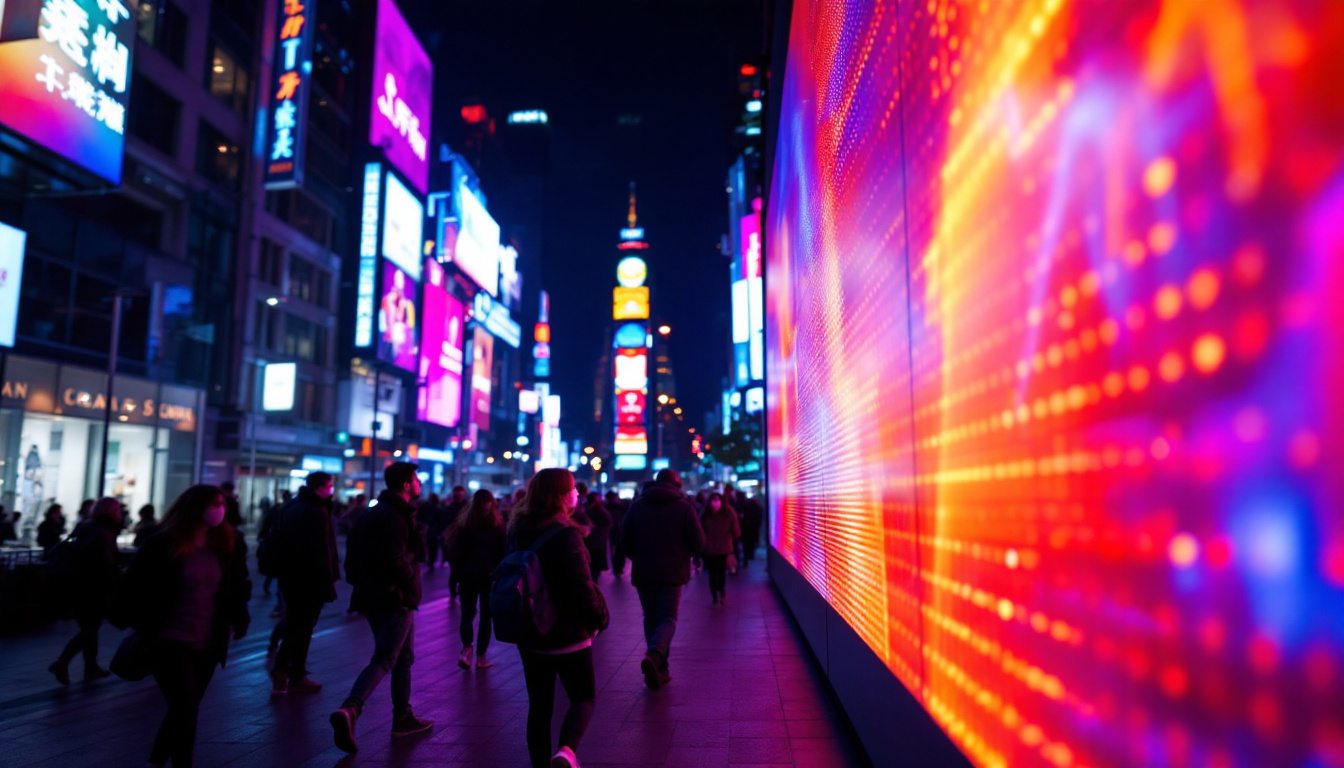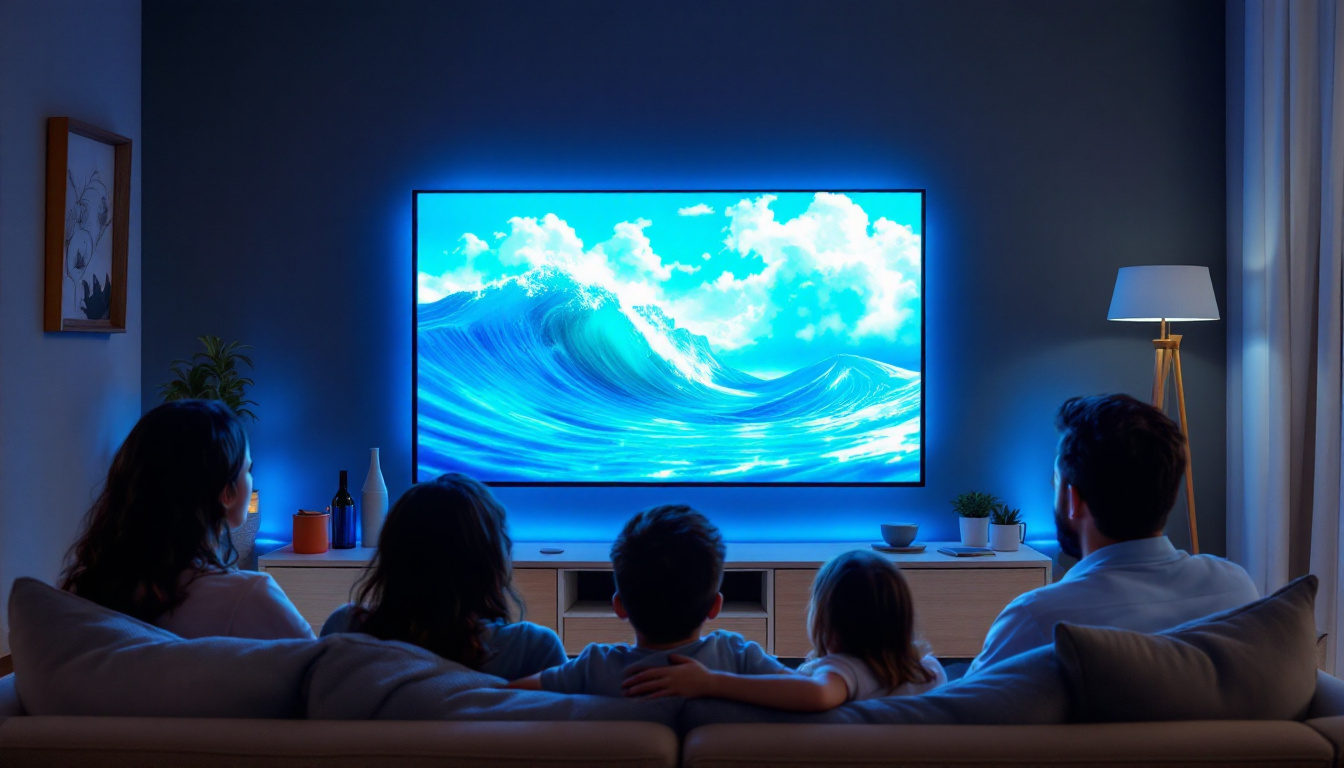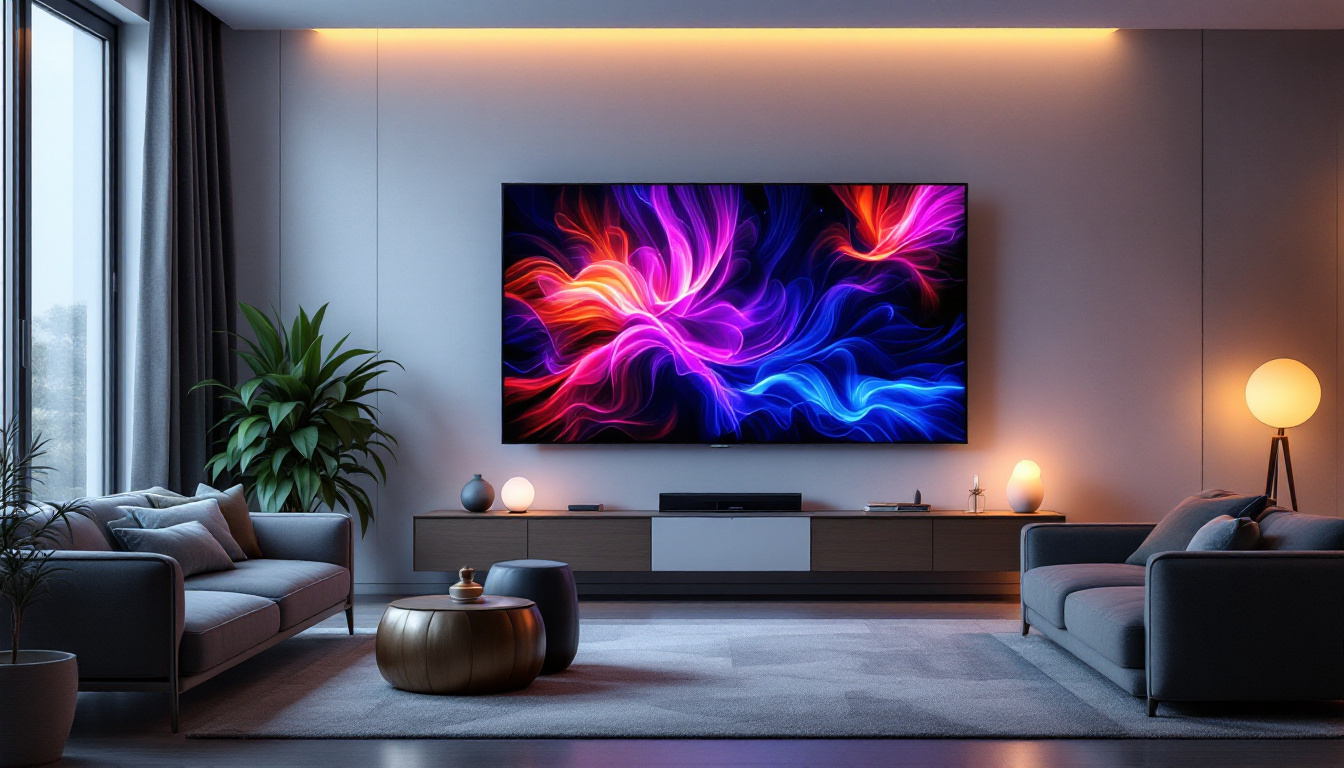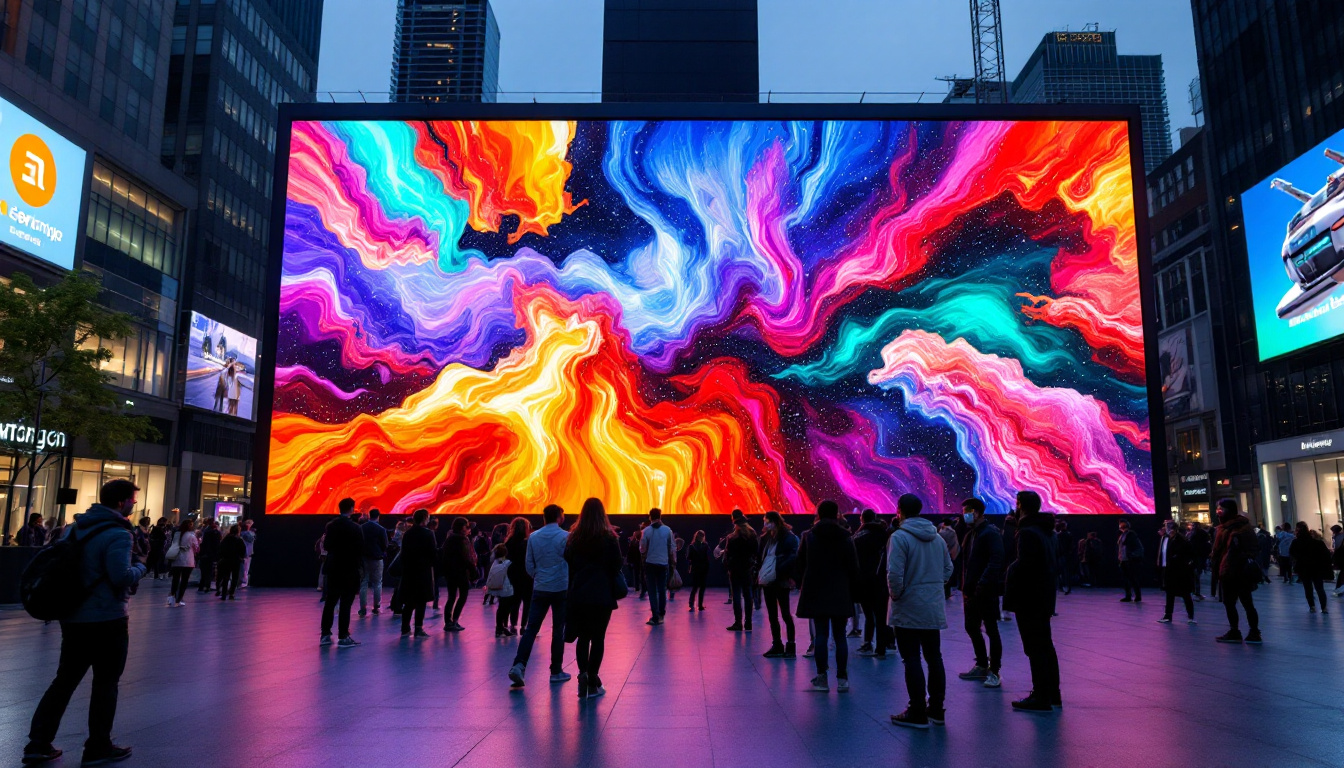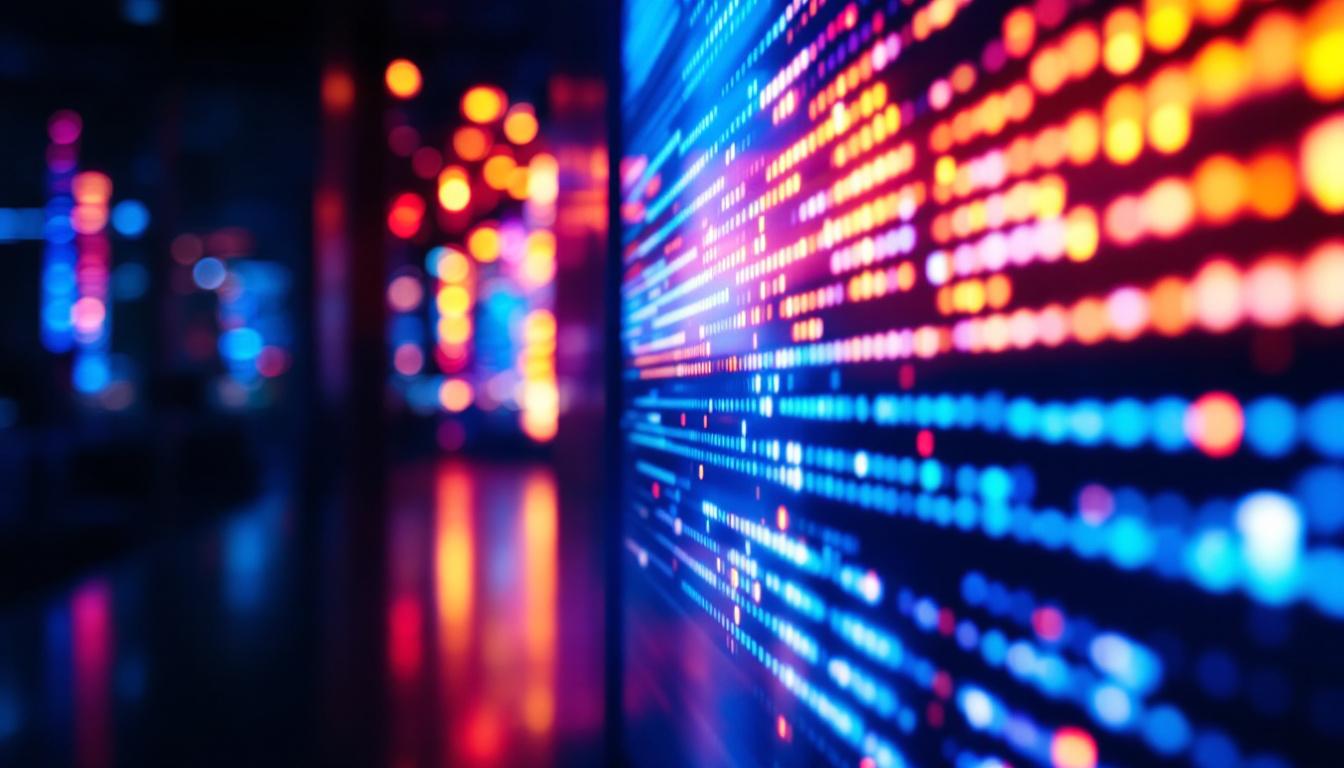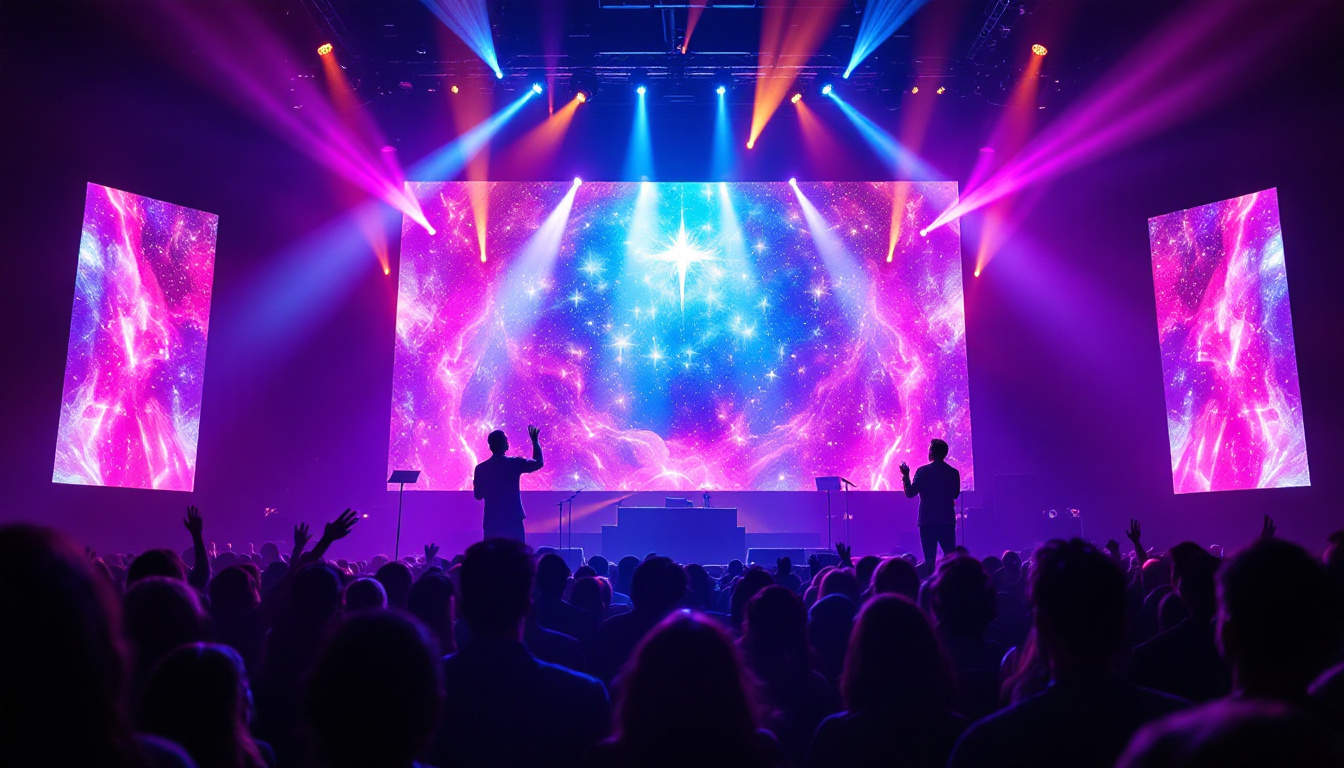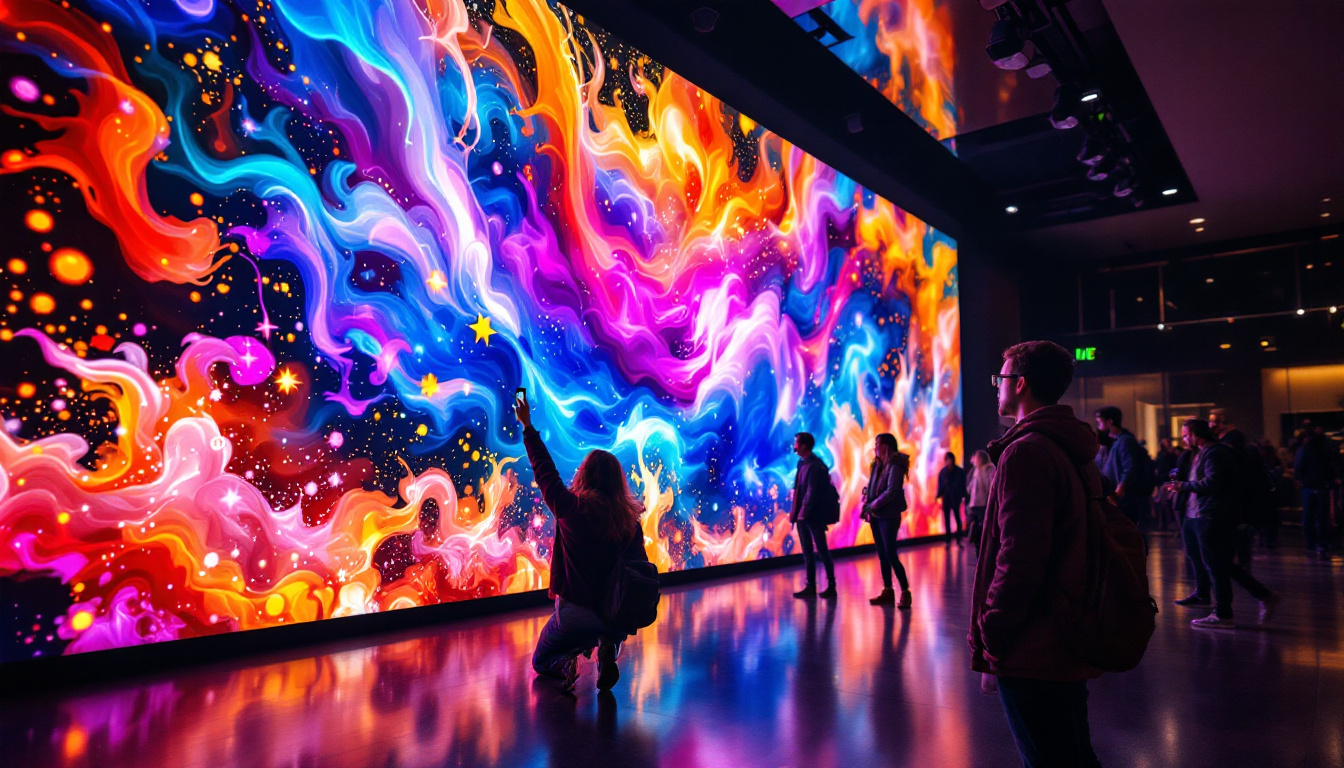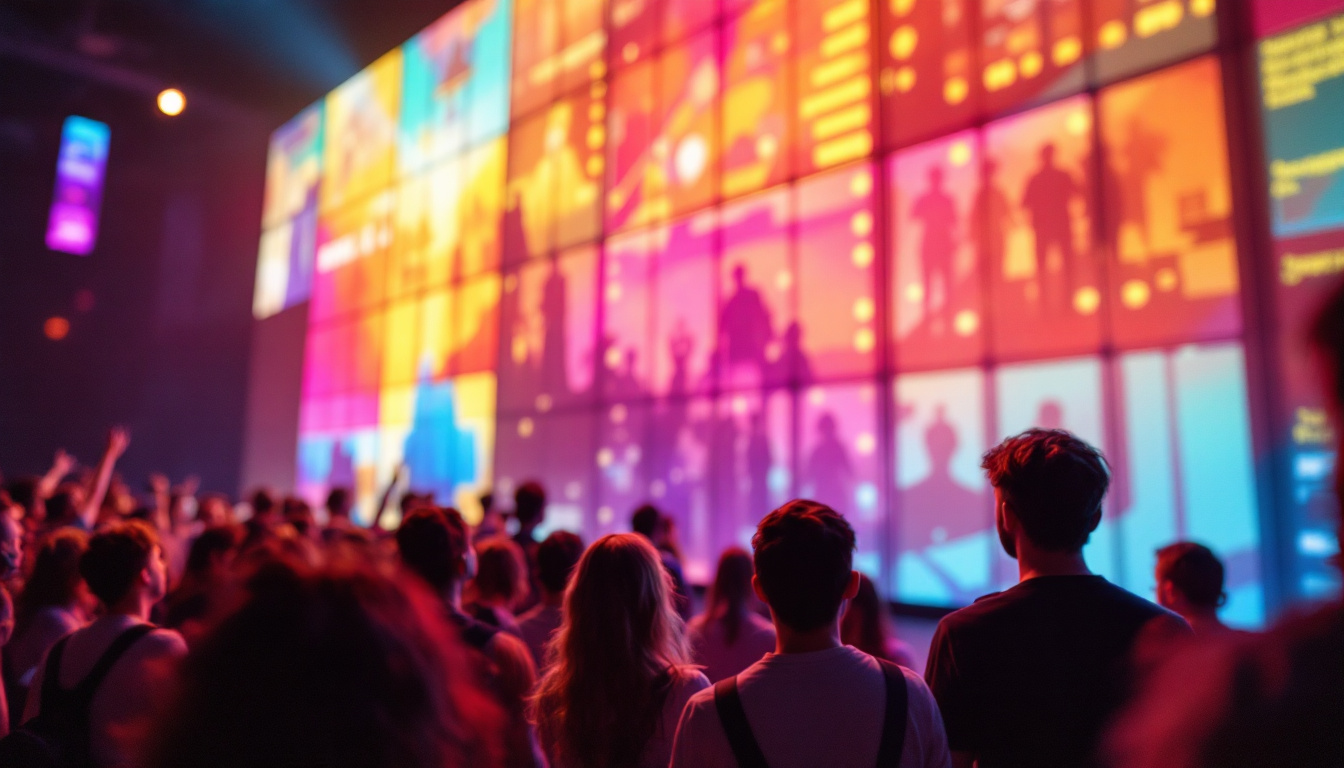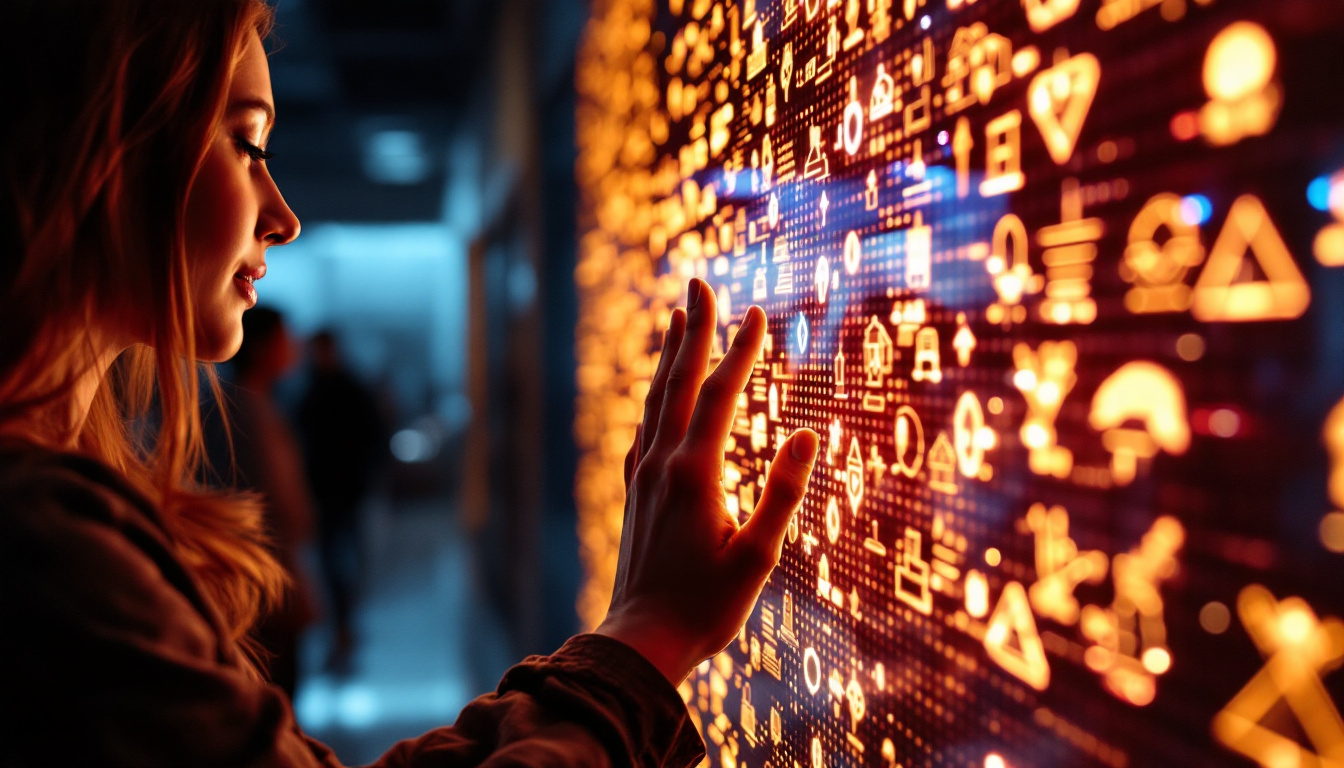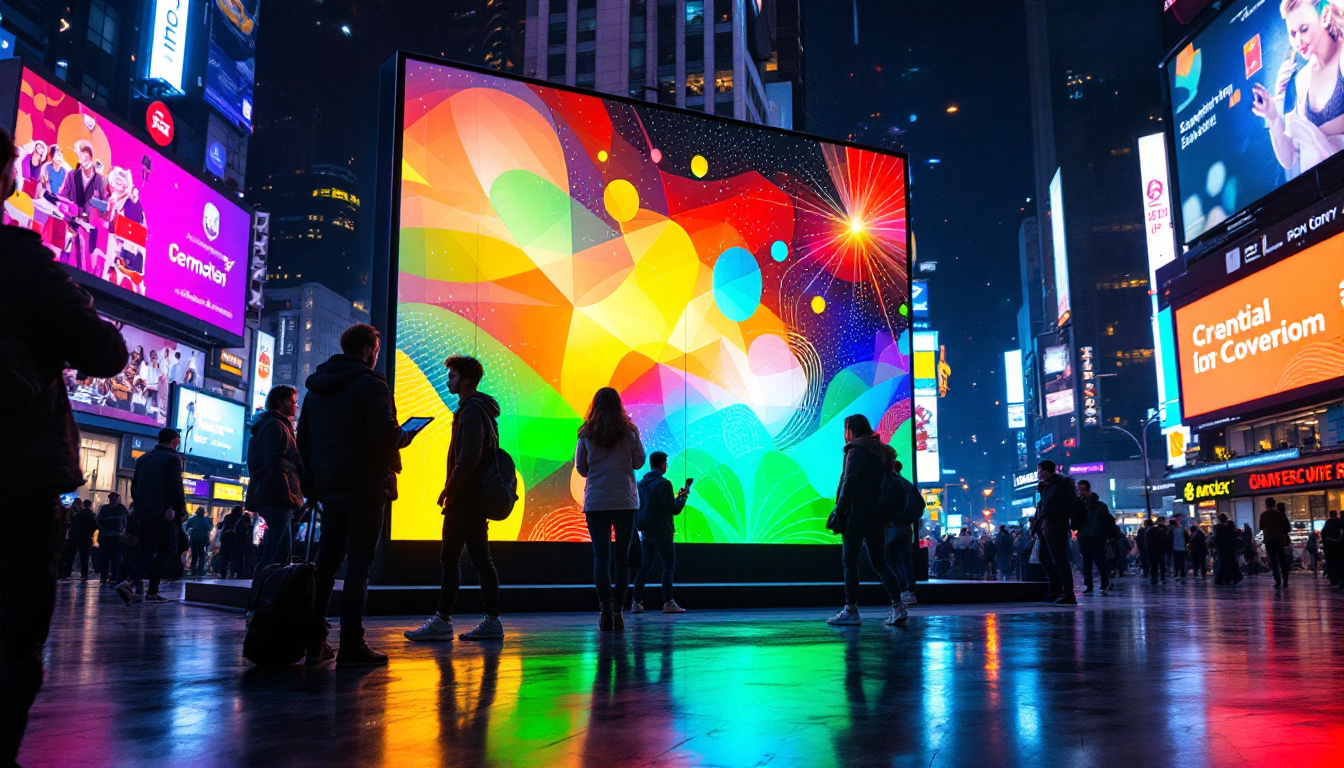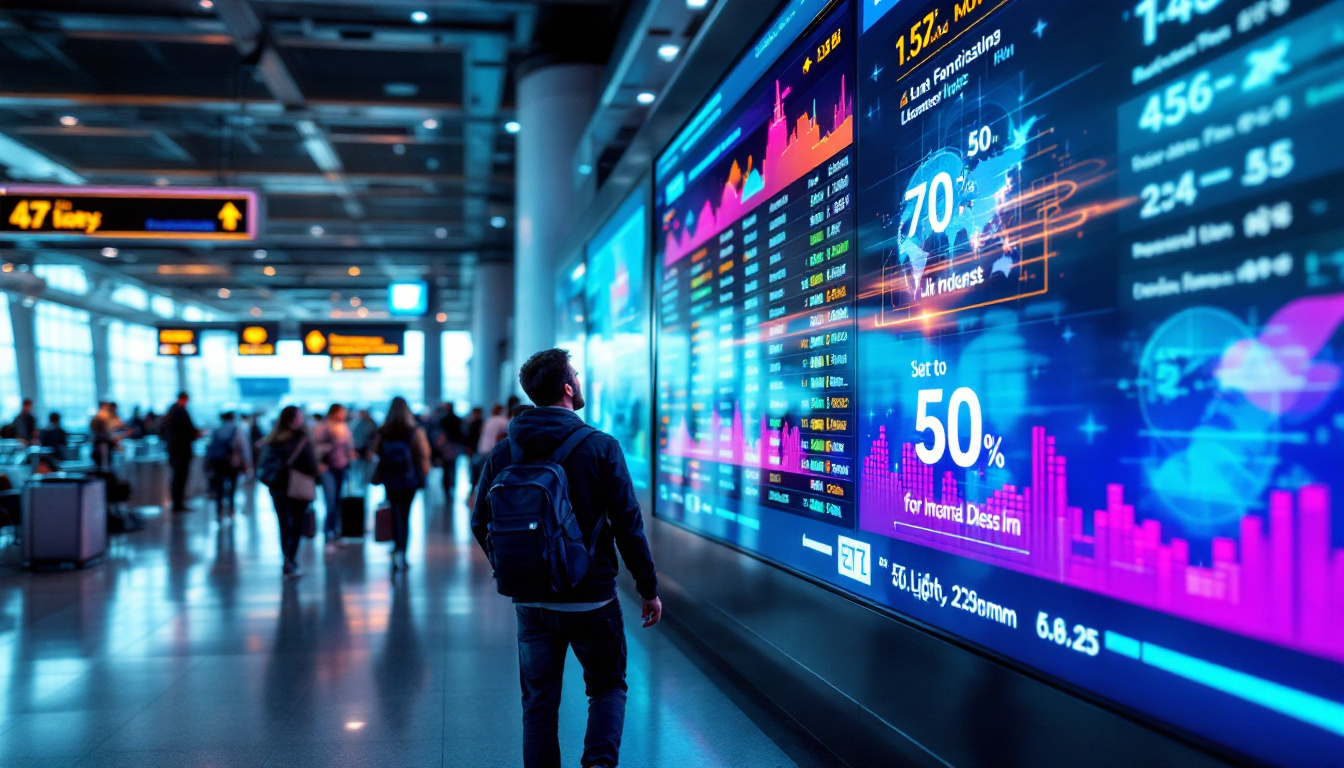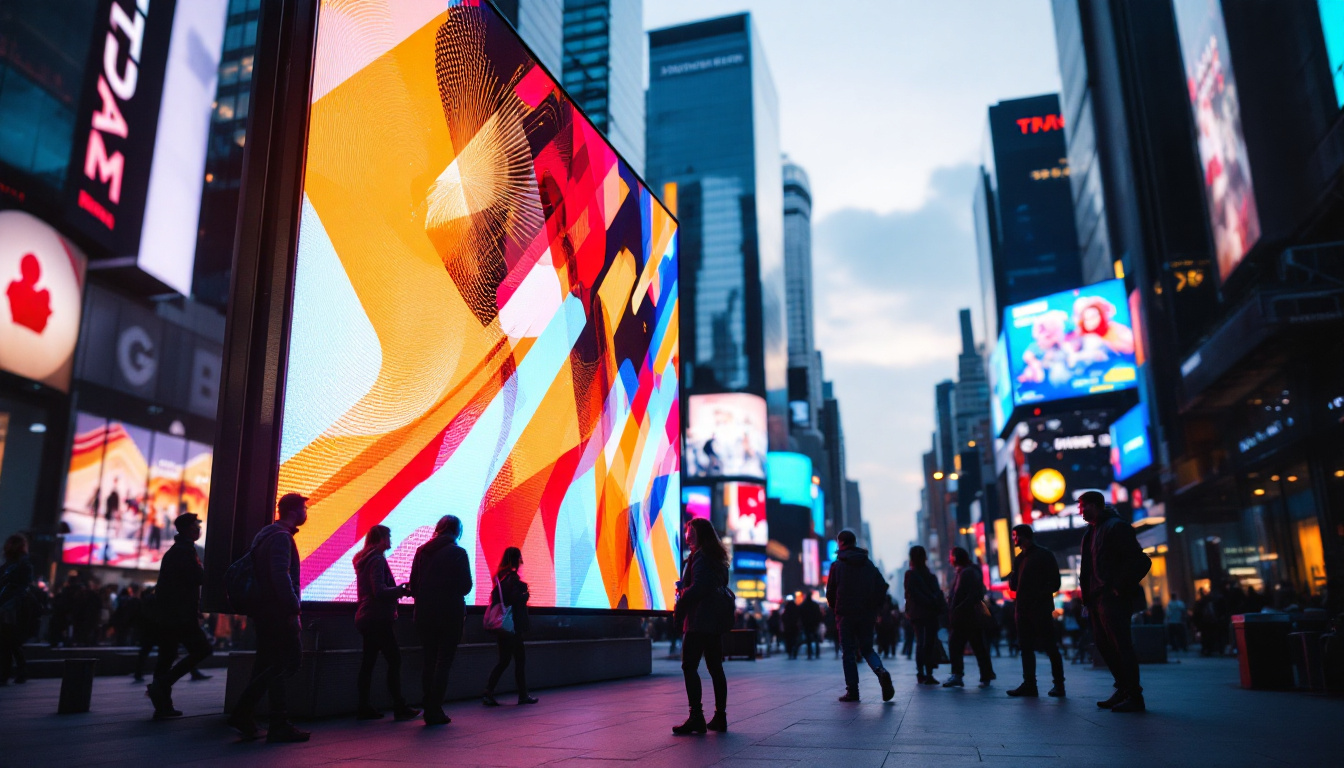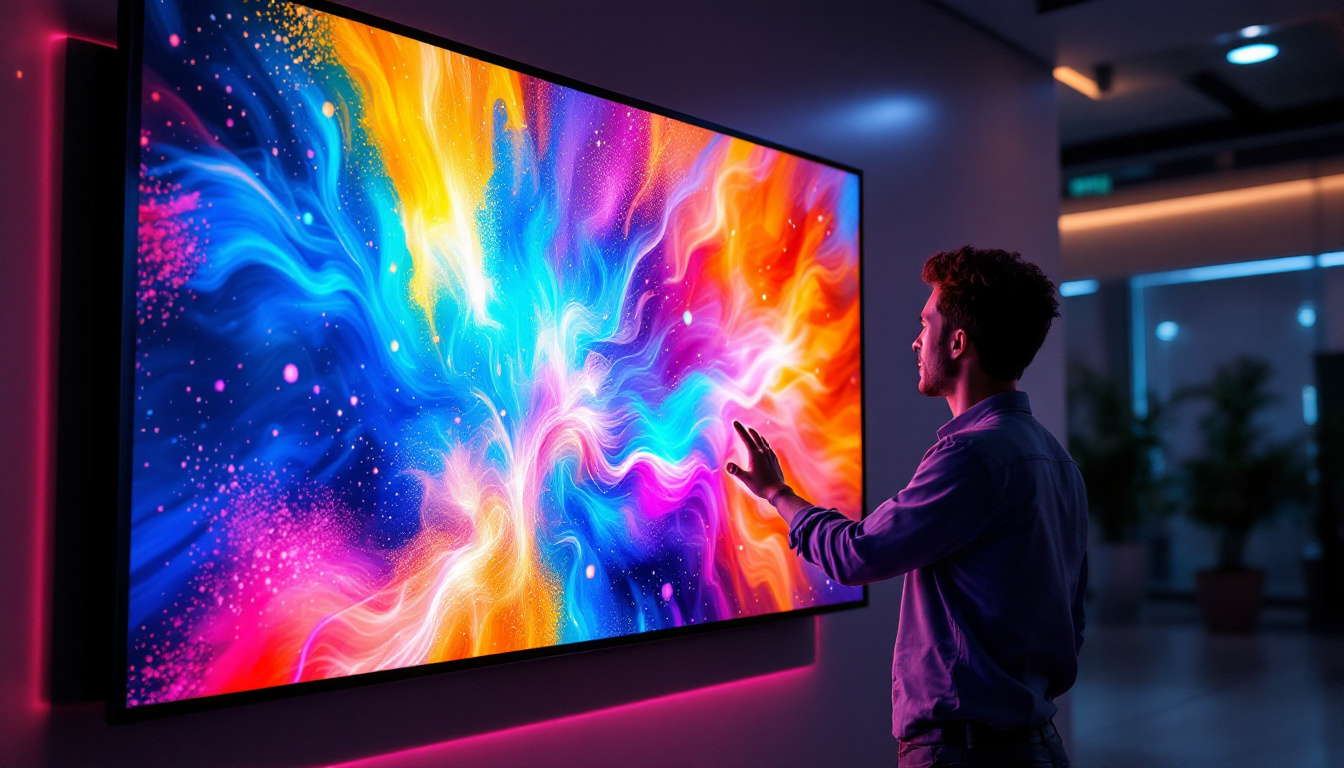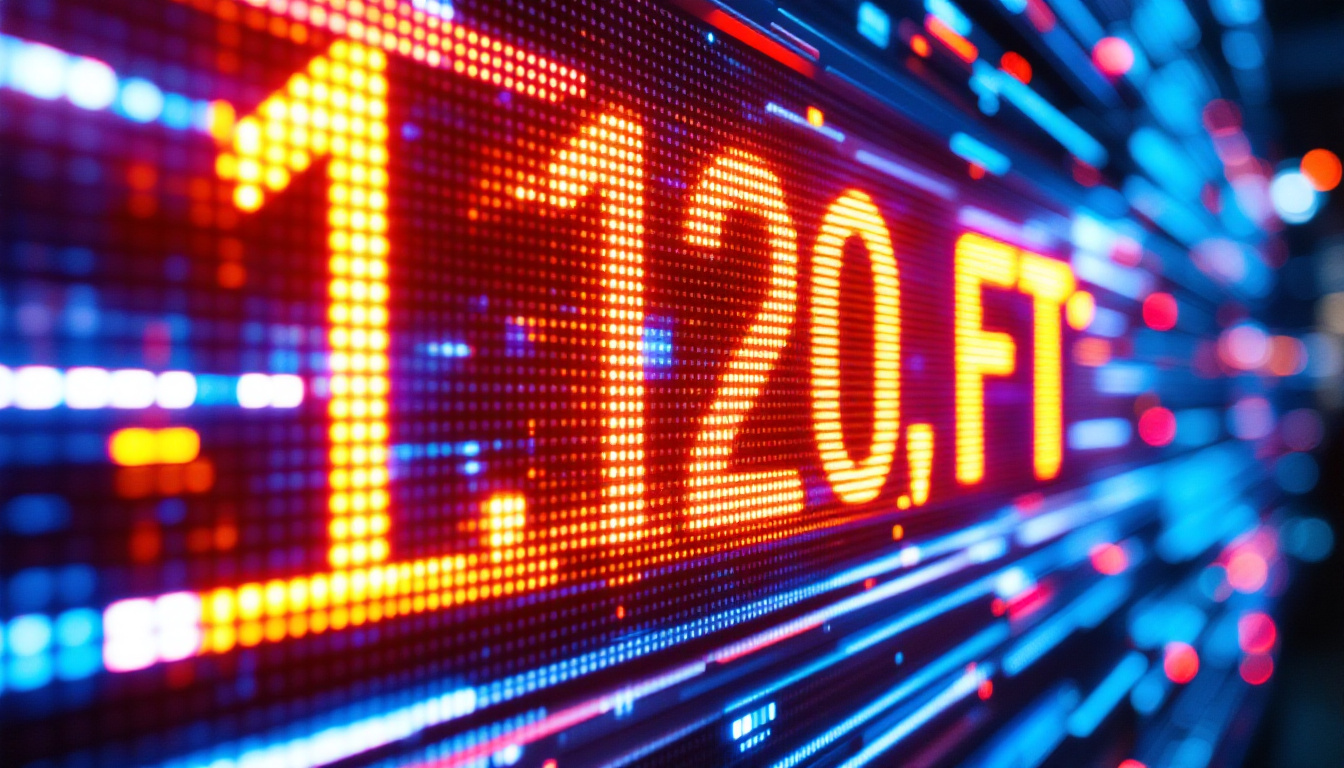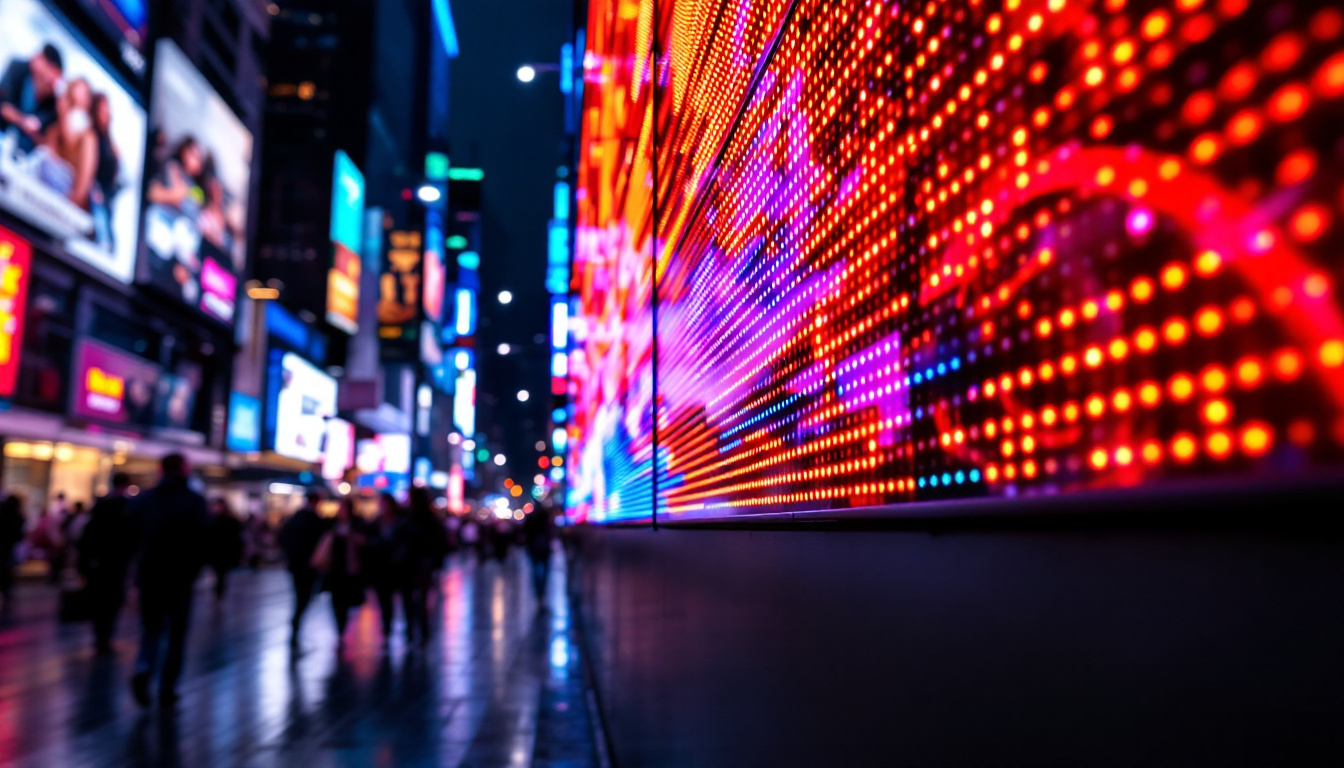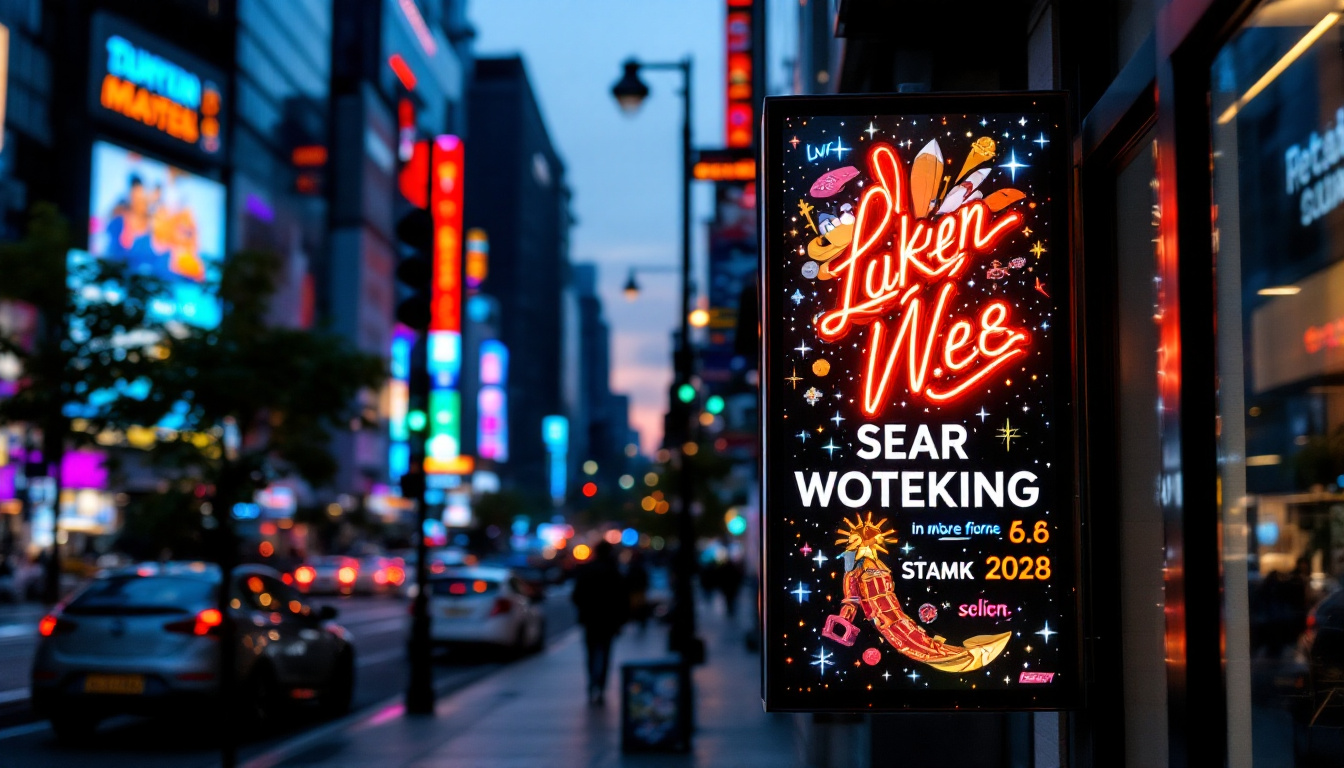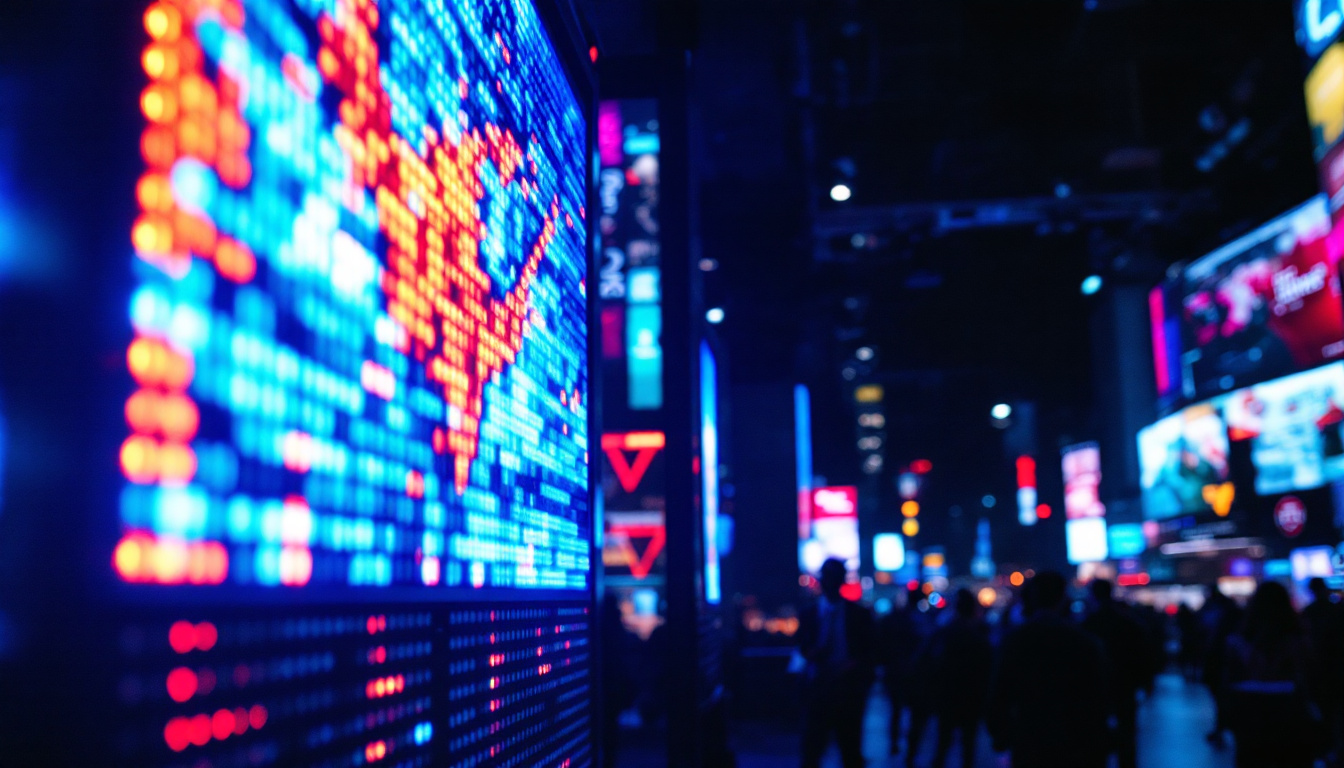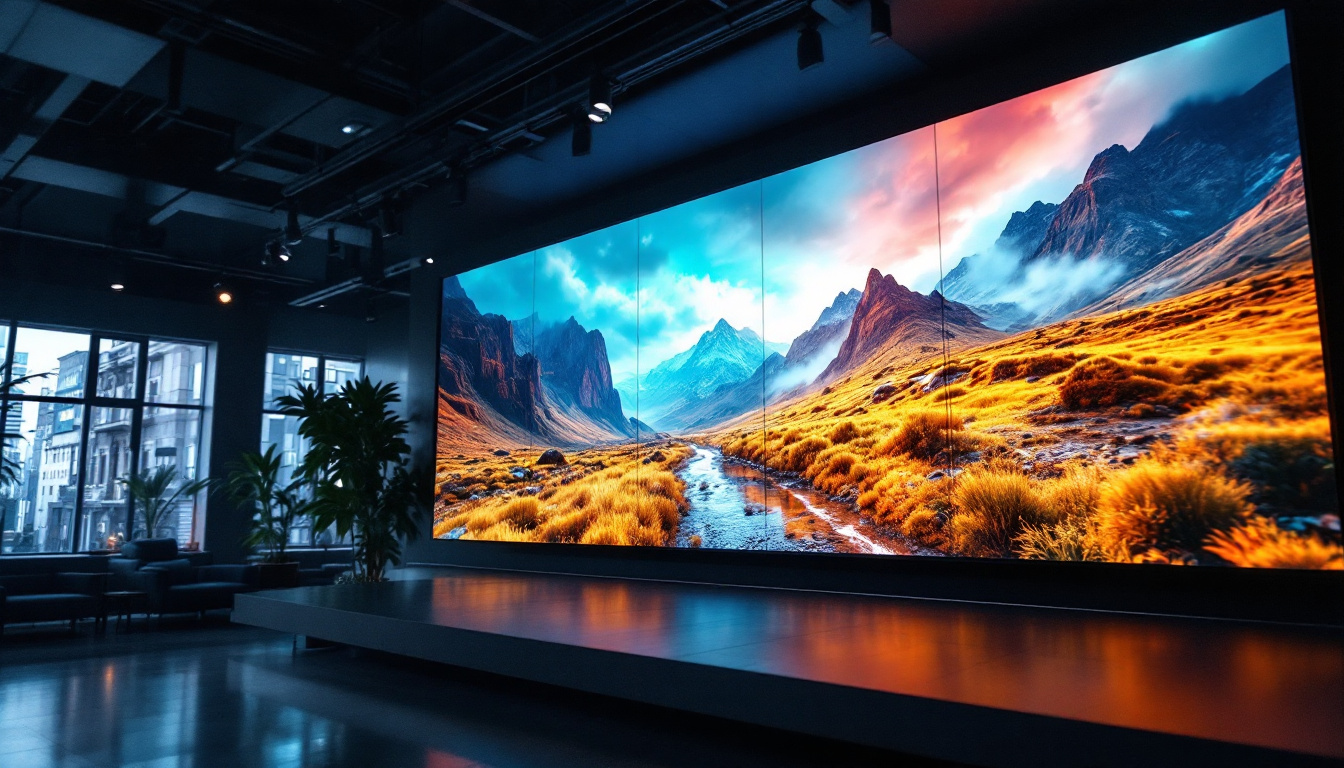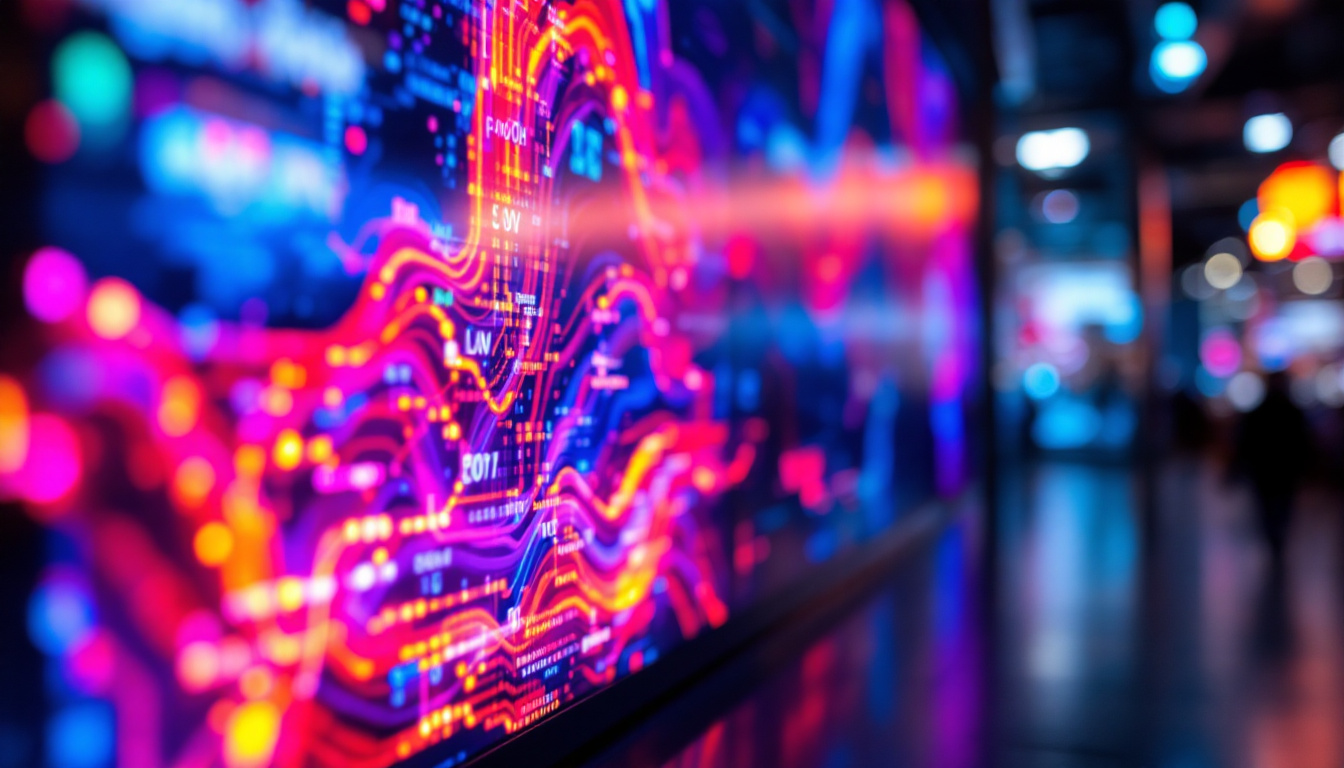In the contemporary world of visual communication, LED displays have emerged as a pivotal technology, revolutionizing how information is conveyed to audiences. Allin Solutions, a leader in the field, provides innovative LED display solutions that cater to various industries. This article delves into the intricacies of LED displays, their applications, and the advantages they offer.
Understanding LED Technology
Light Emitting Diodes (LEDs) are semiconductor devices that emit light when an electric current passes through them. This technology is at the heart of LED displays, which are composed of numerous tiny LEDs that work together to create vibrant images and videos. The efficiency of LEDs is one of their most remarkable features, as they convert a significant portion of electrical energy into light, making them far more energy-efficient than traditional incandescent bulbs.
How LED Displays Work
LED displays function by combining red, green, and blue (RGB) LEDs to produce a full spectrum of colors. Each pixel on an LED screen is made up of these three colors, which can be adjusted in intensity to create various hues. When these pixels are illuminated in different combinations, they form the images and videos that captivate viewers. The rapid response time of LEDs also allows for smooth transitions and animations, enhancing the overall viewing experience.
The brightness and clarity of LED displays are influenced by the quality of the LEDs used, the configuration of the display, and the technology behind the driving circuitry. High-quality displays can achieve remarkable brightness levels, making them suitable for both indoor and outdoor applications. Additionally, advancements in LED technology have led to the development of features such as high dynamic range (HDR), which enhances the contrast and color accuracy, allowing for a more lifelike representation of images.
Types of LED Displays
LED displays come in various forms, each tailored for specific applications. The most common types include:
- Indoor LED Displays: Designed for use in controlled environments, these displays offer high resolution and are ideal for advertising, presentations, and events. Their ability to display intricate details makes them a favorite in venues such as theaters and conference halls.
- Outdoor LED Displays: Built to withstand harsh weather conditions, outdoor displays are typically larger and brighter, making them perfect for billboards and stadiums. These displays often feature protective coatings and robust housings to ensure longevity and performance in varying climates.
- Transparent LED Displays: These innovative displays allow for visibility through the screen while still showcasing vibrant content, making them popular in retail environments. They enable brands to engage customers without obstructing the view of the products behind them, creating a unique shopping experience.
Another emerging type of LED display is the flexible LED screen, which can be bent and shaped to fit unconventional spaces. This adaptability opens up new possibilities for creative installations in art, architecture, and advertising. Furthermore, advancements in microLED technology are paving the way for displays with even smaller pixel sizes, resulting in higher resolutions and improved color accuracy, which could revolutionize how we experience visual media in the near future.
Applications of LED Displays
LED displays have found their way into numerous sectors, transforming how information is shared and experienced. From advertising to entertainment, their versatility is unmatched.
Advertising and Marketing
One of the most significant applications of LED displays is in advertising and marketing. Businesses utilize these displays to capture attention in high-traffic areas, promoting products and services with dynamic visuals. The ability to change content quickly allows for real-time updates, making campaigns more effective.
Digital billboards, for instance, can rotate advertisements every few seconds, ensuring that multiple brands get exposure without the need for physical changes. This flexibility not only enhances visibility but also maximizes advertising space.
Entertainment and Events
In the entertainment industry, LED displays play a crucial role in enhancing the audience experience. Concerts, sports events, and festivals often feature large LED screens that display live feeds, graphics, and animations, creating an immersive environment.
Furthermore, LED walls can be configured in various shapes and sizes, allowing for creative staging and set designs. This adaptability has made them a staple in modern event production, where visual impact is paramount.
Transportation and Public Information
LED displays are increasingly used in transportation systems to provide real-time information to passengers. Buses, trains, and airports utilize LED screens to display arrival and departure times, service updates, and safety information.
These displays enhance the overall travel experience by ensuring that passengers are well-informed, reducing confusion and improving efficiency in public transport systems.
Advantages of LED Displays
The popularity of LED displays can be attributed to several key advantages that set them apart from traditional display technologies.
Energy Efficiency
One of the most significant benefits of LED displays is their energy efficiency. Compared to traditional incandescent or fluorescent displays, LEDs consume significantly less power, resulting in lower operational costs. This efficiency not only benefits businesses financially but also contributes to environmental sustainability.
Longevity and Durability
LED displays are known for their longevity and durability. With a lifespan of up to 100,000 hours, they require less frequent replacements than other display technologies. Additionally, they are more resistant to shock and vibration, making them suitable for a variety of environments, including outdoor settings.
High Brightness and Contrast
LED displays offer superior brightness and contrast ratios, ensuring that content remains visible even in direct sunlight. This capability makes them ideal for outdoor advertising and events, where visibility is crucial. The clarity and vibrancy of LED displays enhance the viewer’s experience, making them more engaging and effective.
Challenges and Considerations
While LED displays offer numerous advantages, there are also challenges and considerations that businesses must address when implementing this technology.
Initial Investment Costs
The initial investment for high-quality LED displays can be significant. Businesses must weigh the upfront costs against the long-term benefits, including energy savings and reduced maintenance expenses. However, as technology advances and production costs decrease, LED displays are becoming more accessible to a wider range of businesses.
Content Management
Effective content management is crucial for maximizing the impact of LED displays. Businesses need to invest in software solutions that allow for easy content updates and scheduling. Without proper management, the potential of LED displays can be underutilized, leading to missed opportunities for engagement.
Environmental Impact
Although LED displays are more energy-efficient than traditional displays, their production and disposal can have environmental implications. Businesses should consider sustainable practices when sourcing materials and disposing of outdated technology. Recycling programs and responsible disposal methods can help mitigate these impacts.
Future Trends in LED Display Technology
The LED display industry is continually evolving, with new trends and technologies emerging that promise to enhance functionality and user experience.
Advancements in Resolution
As technology advances, the resolution of LED displays continues to improve. High-definition and ultra-high-definition displays are becoming more common, providing sharper images and more detailed visuals. This trend is particularly important for applications in advertising and entertainment, where clarity is essential.
Integration with Smart Technology
Smart technology integration is another trend shaping the future of LED displays. With the rise of the Internet of Things (IoT), LED displays can now connect to other devices and systems, allowing for real-time data sharing and interactive experiences. This integration opens up new possibilities for businesses to engage with their audiences.
Flexible and Modular Designs
Flexible and modular LED displays are gaining popularity, allowing for creative installations that can adapt to various environments. These designs enable businesses to create unique visual experiences that capture attention and enhance brand identity. Whether it’s a curved display or a customizable shape, the possibilities are endless.
Choosing the Right LED Display for Your Needs
With various types and configurations of LED displays available, selecting the right one for specific needs can be a daunting task. Here are some key considerations to keep in mind.
Determine Your Purpose
Before investing in an LED display, it’s essential to define its purpose. Will it be used for advertising, information dissemination, or entertainment? Understanding the primary function will help narrow down the options and ensure that the chosen display meets the intended goals.
Consider the Environment
The environment where the LED display will be installed plays a crucial role in the decision-making process. Outdoor displays require higher brightness levels and weatherproofing, while indoor displays can focus more on resolution and color accuracy. Assessing the installation location will guide the selection of the appropriate display type.
Budget and ROI
Establishing a budget is vital when considering an LED display. While high-quality displays may require a larger initial investment, they often yield better returns in the long run due to lower maintenance costs and higher engagement rates. Evaluating the potential return on investment (ROI) will help justify the expenditure.
Conclusion
LED displays have transformed the landscape of visual communication, offering unparalleled advantages in brightness, energy efficiency, and versatility. As technology continues to evolve, the potential applications of LED displays are expanding, making them an invaluable asset for businesses across various sectors.
Allin Solutions stands at the forefront of this innovation, providing cutting-edge LED display solutions tailored to meet the unique needs of clients. By understanding the intricacies of LED technology and its applications, businesses can leverage these displays to enhance their communication strategies and engage their audiences effectively.
In a world where visual impact is paramount, investing in LED display technology is not just a trend; it is a strategic move that can lead to significant benefits in branding, communication, and overall business success.
Discover LumenMatrix’s Innovative LED Display Solutions
Ready to elevate your visual communication strategy with the latest in LED technology? Look no further than LumenMatrix, where innovation meets excellence in creating dynamic and immersive visual experiences. From indoor and outdoor displays to specialized solutions like vehicle and sports LED displays, LumenMatrix offers a comprehensive range of products designed to captivate your audience and amplify your message. Embrace the future of digital signage with LumenMatrix and transform your brand’s visibility today. Check out LumenMatrix LED Display Solutions and take the first step towards unparalleled visual engagement.

